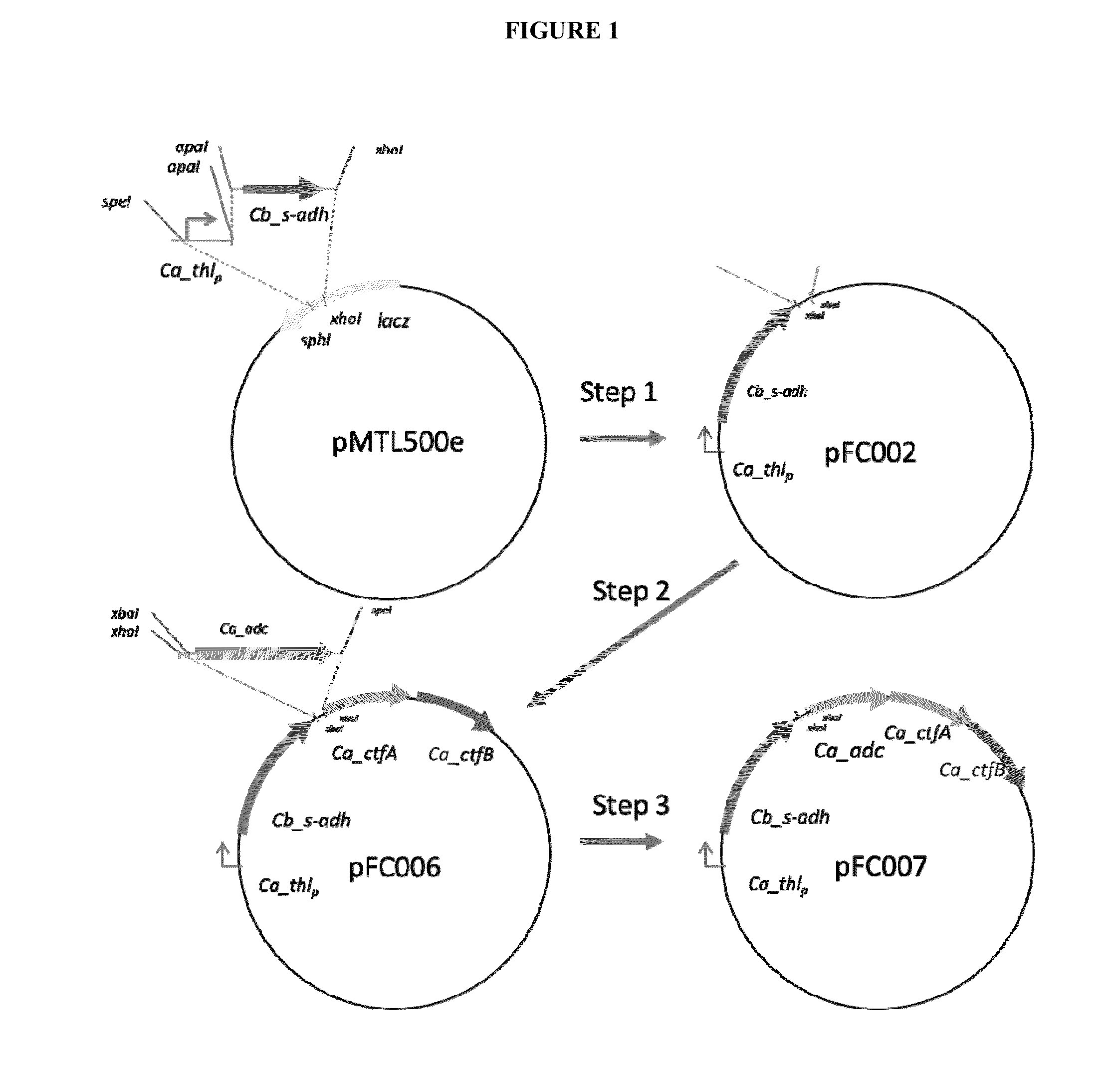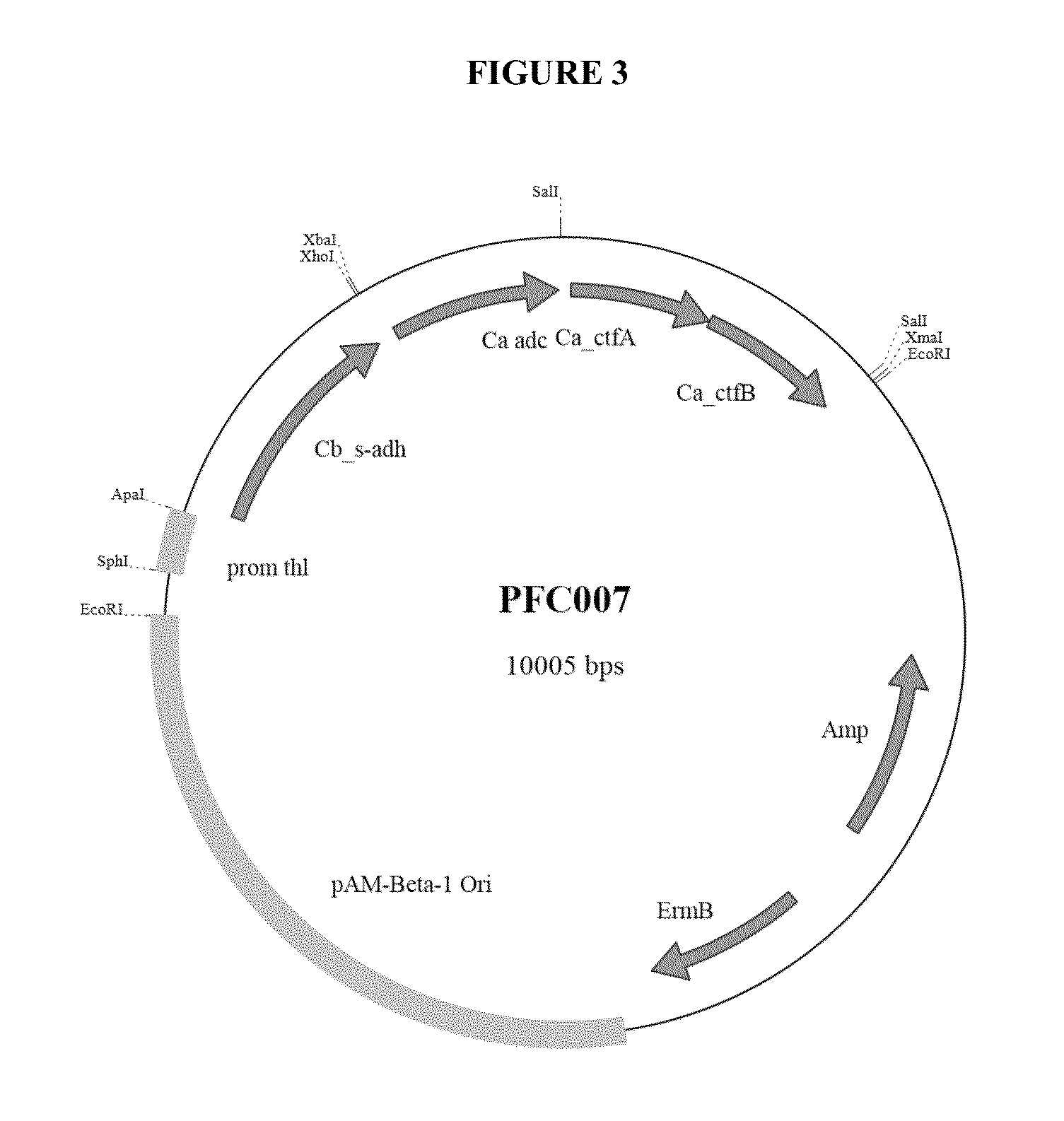Production of isopropanol by improved recombinant strains
a technology of recombinant strains and isopropanol, which is applied in the direction of lyase, transferase, bulk chemical production, etc., can solve the problems of not all strains of i>c. beijerinckii can be produced economically viable, and no longer use the method of isopropanol production in industrial us
- Summary
- Abstract
- Description
- Claims
- Application Information
AI Technical Summary
Benefits of technology
Problems solved by technology
Method used
Image
Examples
examples
Materials and methods
Equipment and Materials
[0099]The kits used in the operations of molecular biology (construction of the plasmid vectors) are presented in Table 1.
TABLE 1Kits and materials used in the operations of molecular biologyName of the kitUseSupplierRestriction enzymes: apaI, speI,Enzymatic digestion of plasmid DNAsNew EnglandsphI, xbaI and xhoIBiolabs (NEB)High Fidelity PCR Master Mix ™PCR amplificationRocheDreamTaq ™PCR amplificationFermentasOligonucleotides (Table 3)Primers for the PCR reactions, created byBaseClearthe inventorsAlkaline phosphatasedephosphorylation of the 5′ ends of theNew Englandlinearized vectors preventing self-ligationBiolabsT4 DNA ligaseligation of DNA fragmentNew EnglandBiolabs (NEB)GenJET ™ plasmid miniprepExtraction of plasmid DNA from cultures ofFermentasGenElute ™ Bacterial GenomicExtraction of genomic DNA from bacteriaSigma-AldrichDNA(Gram-positive and Gram-negative)Z-Competent ™E. coliProduction of chemocompetent bacteria E. coliZymo Resear...
PUM
| Property | Measurement | Unit |
|---|---|---|
| Fraction | aaaaa | aaaaa |
| Fraction | aaaaa | aaaaa |
| Fraction | aaaaa | aaaaa |
Abstract
Description
Claims
Application Information
 Login to View More
Login to View More - R&D
- Intellectual Property
- Life Sciences
- Materials
- Tech Scout
- Unparalleled Data Quality
- Higher Quality Content
- 60% Fewer Hallucinations
Browse by: Latest US Patents, China's latest patents, Technical Efficacy Thesaurus, Application Domain, Technology Topic, Popular Technical Reports.
© 2025 PatSnap. All rights reserved.Legal|Privacy policy|Modern Slavery Act Transparency Statement|Sitemap|About US| Contact US: help@patsnap.com



